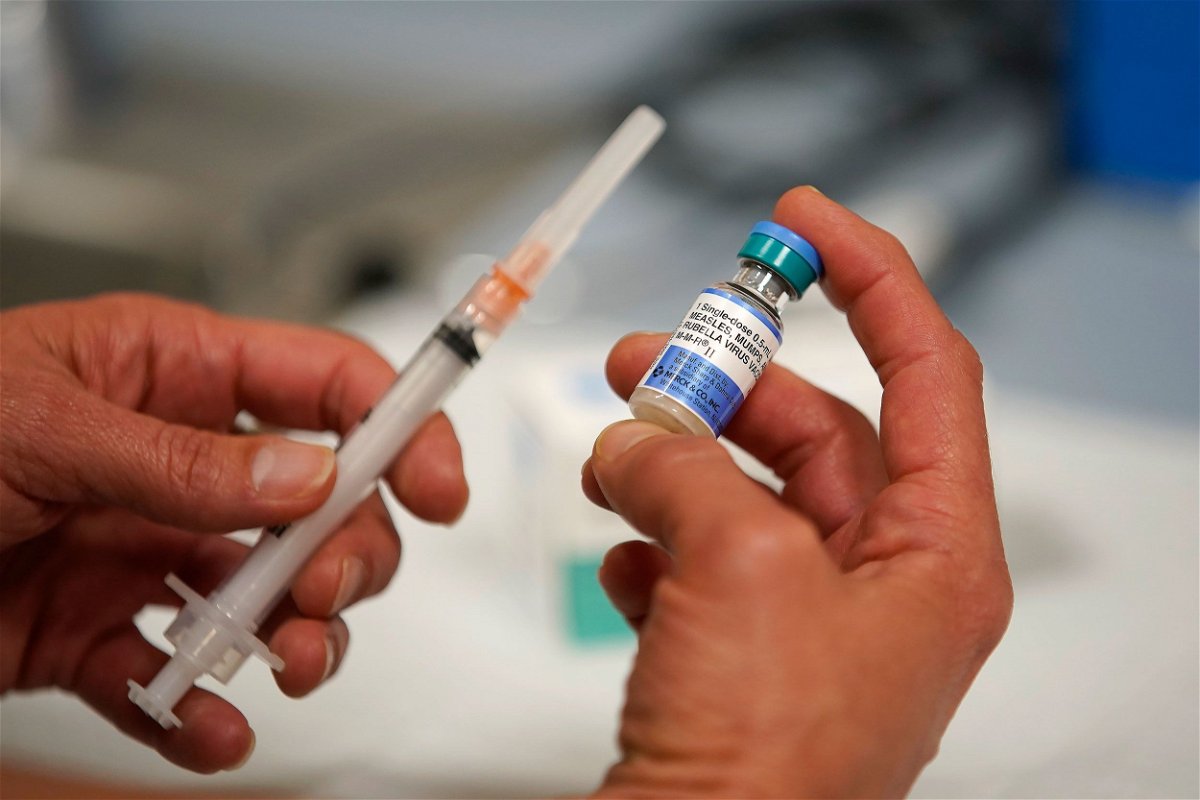Recent increase in measles cases threatens elimination status in the US, CDC says

By Deidre McPhillips, CNN
(CNN) — More than 100 cases of measles have been reported in the United States since the start of the year, and the US Centers for Disease Control and Prevention warns that a rapid rise in cases — significantly more than in recent years — poses a renewed threat to the country’s disease elimination status.
“Risk for widespread U.S. measles transmission remains low because of high population immunity,” the CDC said in a report published Thursday. “However, because of the increase in cases during the first quarter of 2024, additional activities are needed to increase U.S. routine measles, mumps, and rubella vaccination coverage, especially among close-knit and under-vaccinated communities. These activities include encouraging vaccination before international travel and rapidly investigating suspected measles cases.”
Measles was eliminated in the US in 2000, meaning no outbreaks have persisted for a year or more. Measles elimination “reduces the number of cases, deaths, and costs that would occur if endemic measles transmission were reestablished,” according to the CDC report.
In 2019, prolonged outbreaks among undervaccinated communities in New York threatened that status. The new CDC report assesses the performance of the US measles surveillance system and the epidemiological trends that the data have shown since.
From January 2020 through March 2024, there were 338 measles cases reported in the US. Surveillance systems in the US were broadly considered to be well-performing and “sufficiently sensitive to detect isolated cases and outbreaks,” with complete information on critical indicators such as age, date of rash onset, vaccination status and travel history among others.
The vast majority of cases (96%) were associated with importation from international travel, and most of those cases (61%) occurred among US residents who were not vaccinated despite being eligible, or whose vaccination status was unknown.
“The U.S. measles elimination status will continue to be threatened by global increases in measles incidence and decreases in global, national, and local measles vaccination coverage,” the CDC said in the latest report.
Imported cases are expected, but vaccination coverage is key to ensuring outbreaks don’t persist in the US.
“Maintaining measles elimination status is an important public health benchmark. Public health jurisdictions are reaching out to communities and populations with low vaccination rates and we feel this approach will be effective. However, the increase in misinformation about measles vaccination undermines these efforts and could ultimately endanger our elimination status,” Dr. Marcus Plescia, chief medical officer of the Association of State and Territorial Health Officials, said in an emailed statement.
Last month, the CDC issued a health alert to doctors to increase awareness of the international spread of measles, and urged them to vaccinate infants a few months ahead of the typical schedule if families are planning to go abroad.
“The overwhelming scientific evidence shows that vaccines remain among the most effective and safest intervention to both prevent individual illness and protect the health of the public,” said Dr. Jesse Ehrenfeld, president of the American Medical Association, said in an emailed statement last month.
Measles is a highly contagious airborne disease. It can cause serious health consequences or death, especially for young and unvaccinated children.
General symptoms may include fever, cough, runny nose, watery eyes and a rash of red spots. About 1 in 5 unvaccinated people in the US who get measles will be hospitalized, according to the CDC. About 1 in every 20 children with measles will develop pneumonia, and others may develop a dangerous swelling in the brain called encephalitis. Up to 3 of every 1,000 children who become infected with measles may die from respiratory and neurologic complications.
Because measles is so contagious, a high level of vaccination coverage is key to minimizing spread. The US has set a target vaccination rate of 95%, but coverage among kindergarteners has dipped below that in recent years. In the 2022-23 school year, just 93.1% of kindergarteners in the US had completed their MMR vaccine series, leaving about 250,000 at risk. Coverage varies widely by state and community.
As of April 4, CDC data shows that 83% of the cases reported this year have been in unvaccinated people and another 12% only had one dose of the two-dose vaccine. Half of cases have been in children younger than 5, and nearly 60 percent of people — including two thirds of children younger than 5 — have been hospitalized.
CNN’s Brenda Goodman contributed to this report.
The-CNN-Wire
™ & © 2024 Cable News Network, Inc., a Warner Bros. Discovery Company. All rights reserved.
